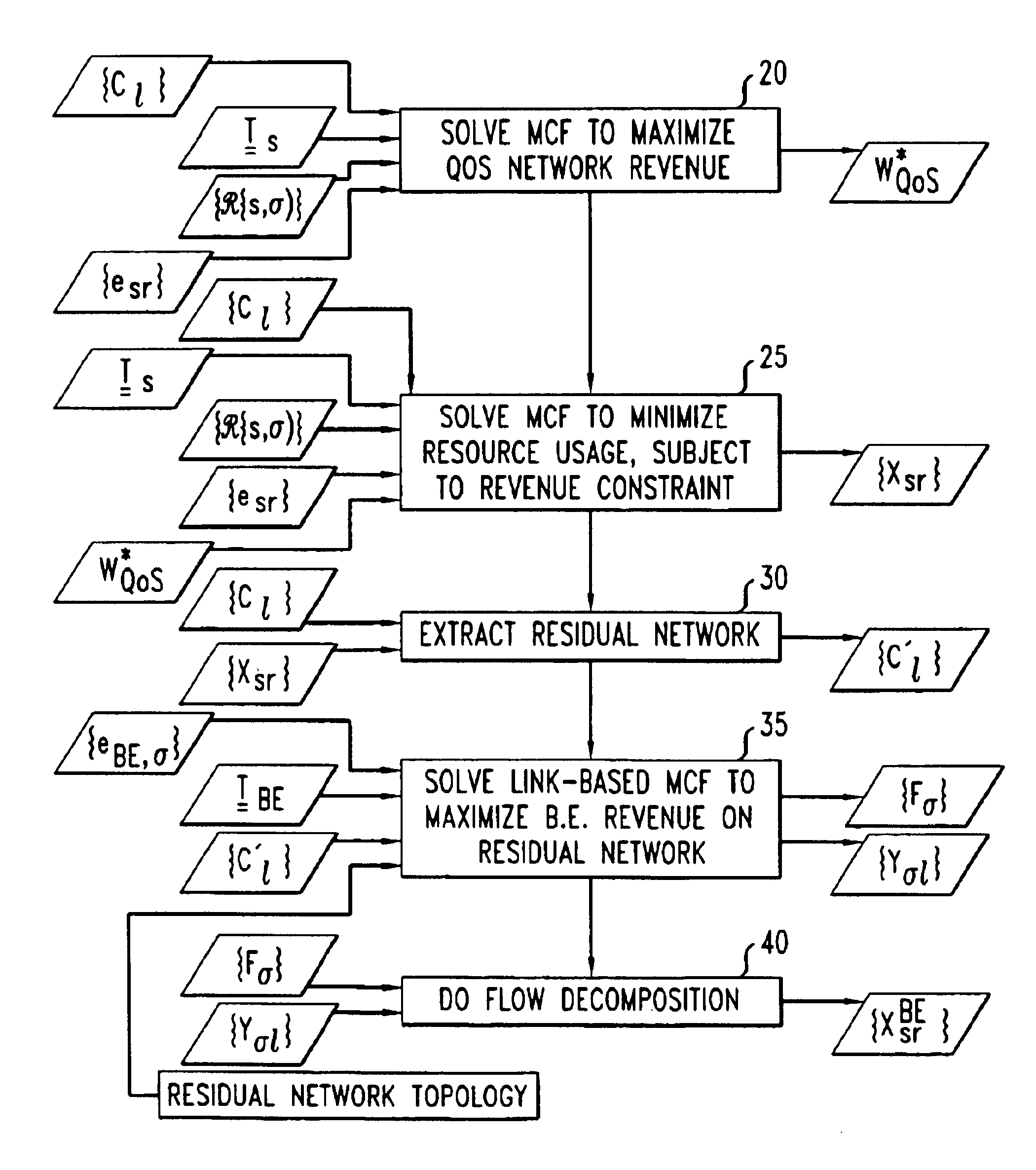Multicommodity flow method for designing traffic distribution on a multiple-service packetized network
a traffic flow and packetized network technology, applied in the field of multicommo, can solve the problems of not always desirable to make available every call, add an unacceptable cumulative delay, and deem the quality of the call unacceptabl
- Summary
- Abstract
- Description
- Claims
- Application Information
AI Technical Summary
Problems solved by technology
Method used
Image
Examples
Embodiment Construction
We performed theoretical analyses based on the network of FIG. 1. Each of links 15.1-15.10 is actually a pair of directed links, one in each direction. Each directed link has a bandwidth of 155 Mbps, referred to here as one OC3 unit, except that links 15.3 and 15.8 have capacities, in each direction, of two OC3 units. The service classes are voice (class 1), video (class 2), premium data (class 3), and best effort (class 4). The route sets for classes 1 and 2 are limited to minimum-hop routes. The route set for class 3 is limited to routes of 4 hops or less. The route set for the best effort class is unrestricted. The demand matrices for the four service classes are obtained by multiplying the matrix of Table 1 by 0.4, 0.1, 0.25, and 0.25, respectively. The total demands for the four services classes are 563.5, 140.9, 352.2, and 352.2, respectively.
The procedures of FIG. 2, blocks 20 and 25 were carried out. In the resulting solution, all bandwidth demands were carried. Then, the fu...
PUM
 Login to View More
Login to View More Abstract
Description
Claims
Application Information
 Login to View More
Login to View More - R&D
- Intellectual Property
- Life Sciences
- Materials
- Tech Scout
- Unparalleled Data Quality
- Higher Quality Content
- 60% Fewer Hallucinations
Browse by: Latest US Patents, China's latest patents, Technical Efficacy Thesaurus, Application Domain, Technology Topic, Popular Technical Reports.
© 2025 PatSnap. All rights reserved.Legal|Privacy policy|Modern Slavery Act Transparency Statement|Sitemap|About US| Contact US: help@patsnap.com



